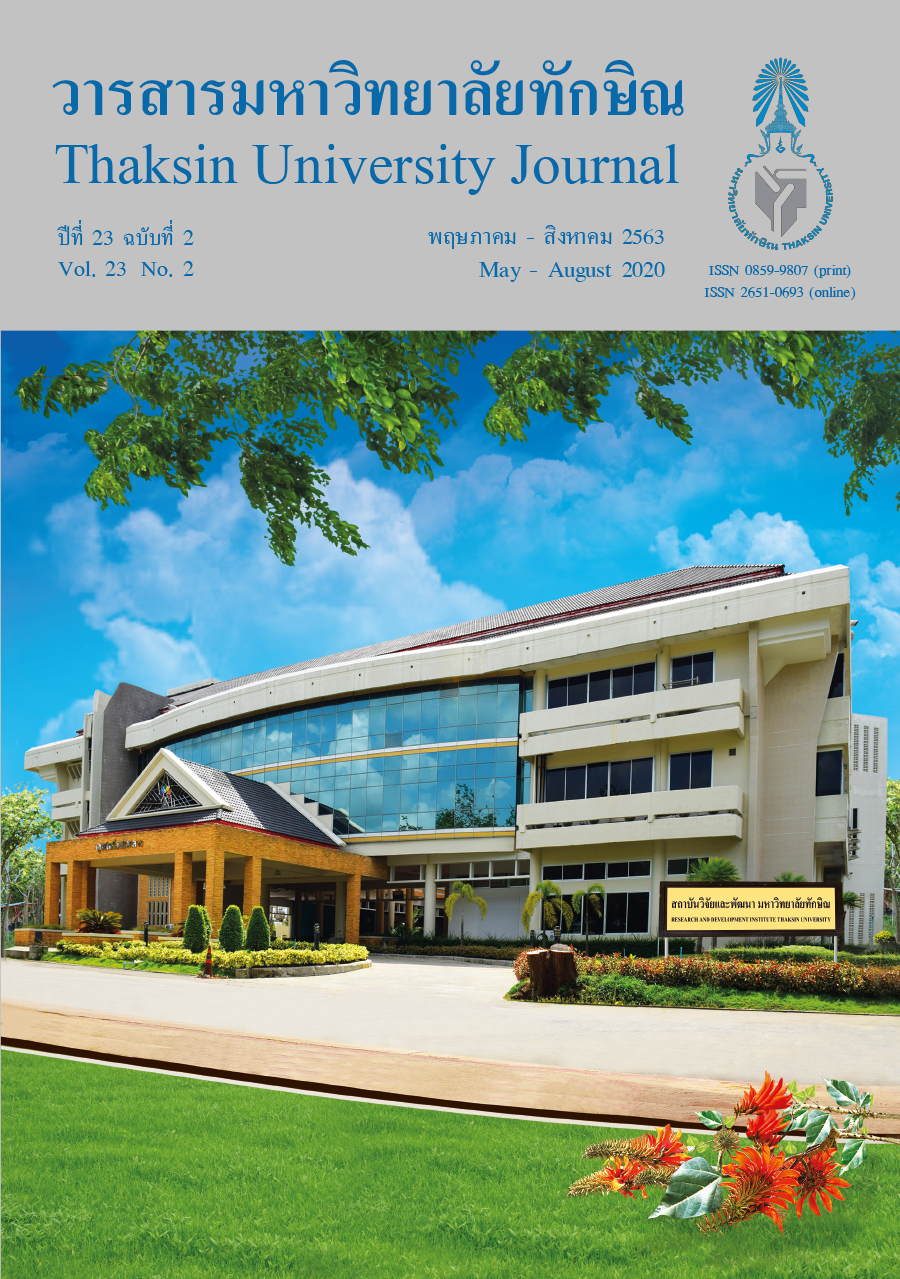An Analysis of Drought in Phetchaburi River Basin using TVDI Derived from MODIS Data
Main Article Content
Abstract
Phetchaburi River Basin frequently faces dry spell periods resulting in water scarcity especially in a rainfed area. Soil moisture is one of main key factors related to drought severity. Satellite remote sensing could be used to estimate soil moisture in the remote areas with large coverage and also monitor drought situation for long period. The objective of this study is to investigate drought situation in the basin using Temperature Vegetation Dryness Index (TVDI). MODIS 8-day composite products of MOD09A1 and MOD11A2 during January 1st 2019 to February 2nd 2020 were used to calculate Normalized Difference Vegetation Index (NDVI) and land surface temperature (Ts). The NDVI-Ts Feature Space was then applied to obtain TVDI data. Finally, the TVDI data was compared to gravimetric soil moisture measured in the study area. Results revealed that TVDI of 0.19 - 0.91 were found with inverse correlation to soil moisture conducted in the field (R of -0.82). High soil moisture was presented for irrigated paddy fields while rainfed sugarcane areas showed low soil moisture with average TVDI of 0.23 and 0.88, respectively. These results indicated that TVDI is an efficient technique used to estimate soil moisture and monitor agricultural drought throughout the large-scale areas. However, using TVDI during a rainy season is limited due to MODIS satellite imagery data are not capable to process land surface temperature.
Article Details

This work is licensed under a Creative Commons Attribution-NonCommercial-NoDerivatives 4.0 International License.
References
Keyantash, J., & Dracup, J. A. (2002). The quantification of drought: an evaluation of drought indices. Bulletin of the American Meteorological Society, 83(8), 1167–1180.
Chen, W.Y., Xiao, Q.G., & Shen, Y.W. (1994). Application of the anomaly vegetation index to monitoring heavy drought in 1992. Journal of Remote Sensing, 9(2), 106–112. (in Chinese).
Kogan, F.N. (1995). Application of vegetation index and brightness temperature for drought detection. Advances in Space Research, 15(11), 91–100.
Price, J. C. (1985). On the analysis of thermal infrared imagery: The limited utility of apparent thermal inertia. Remote Sensing of Environment, 18(1), 59–73.
Jackson, R. D., & Pinter, P. J. (1981). Detection of water stress in wheat by measurement of reflected solar and emitted thermal IR radiation. In The International Colloquium Spectral Signatures of Objects in Remote Sensing. 399–406. September 8-11, 1981, Avignon (France): Institute National de la Recherche Agronomique.
Sandholt, I., Rasmussen, K., & Andersen, J. (2002). A simple interpretation of the surface temperature/vegetation index space for assessment of surface moisture status. Remote Sensing of Environment, 79(2-3), 213-224.
Bai, J. –J., Yu, Y., & Di, L. (2017). Comparison between TVDI and CWSI for drought monitoring in the Guanzhong Plain, China. Journal of Integrative Agriculture, 16(2), 389–397.
Karnieli, A., Agam, N., Pinker, R. T., Anderson, M., Imhoff, M. L., Gutman, G.G., Panov, N., & Goldberg, A. (2010). Use of NDVI and land surface temperature for drought assessment: merits and limitations. Journal of Climate, 23(3), 618–633.
Son, N. T., Chen, C. F., Chen, C. R., Chang, L. Y., & Minh, V. Q. (2012). Monitoring agricultural drought in the lower Mekong basin using MODIS NDVI and land surface temperature data. International Journal of Applied Earth Observation and Geoinformation, 18, 417–427.
Patel, N. R., Anapashsha, R., Kumar, S., Saha, S. K., & Dadhwal, V. K. (2009). Assessing potential of MODIS derived temperature/vegetation condition index (TVDI) to infer soil moisture status. International Journal of Remote Sensing, 30(1), 23–29.
Han, Y., Wang, Y., & Zhao, Y. (2010). Estimating soil moisture conditions of the greater Changbai mountains by land surface temperature and NDVI. IEEE Transactions on Geoscience and Remote Sensing, 48(6), 2509–2515.
Garcia, M., Fernandez, N., Villagarcia, L., Domingo, F., Puigdefabregas, J., & Sandholt, I. (2014). Accuracy of the temperature-vegetation dryness index using MODIS under water-limited vs. energy-limited evapotranspiration conditions. Remote Sensing of Environment, 149, 100–117.
Chen, C. -F., Son, N. -T., Chang, L. -Y., & Chen, C. C. (2011). Monitoring of soil moisture variability in relation to rice cropping systems in the Vietnamese Mekong Delta using MODIS data. Applied Geography, 31(2), 463–475.


